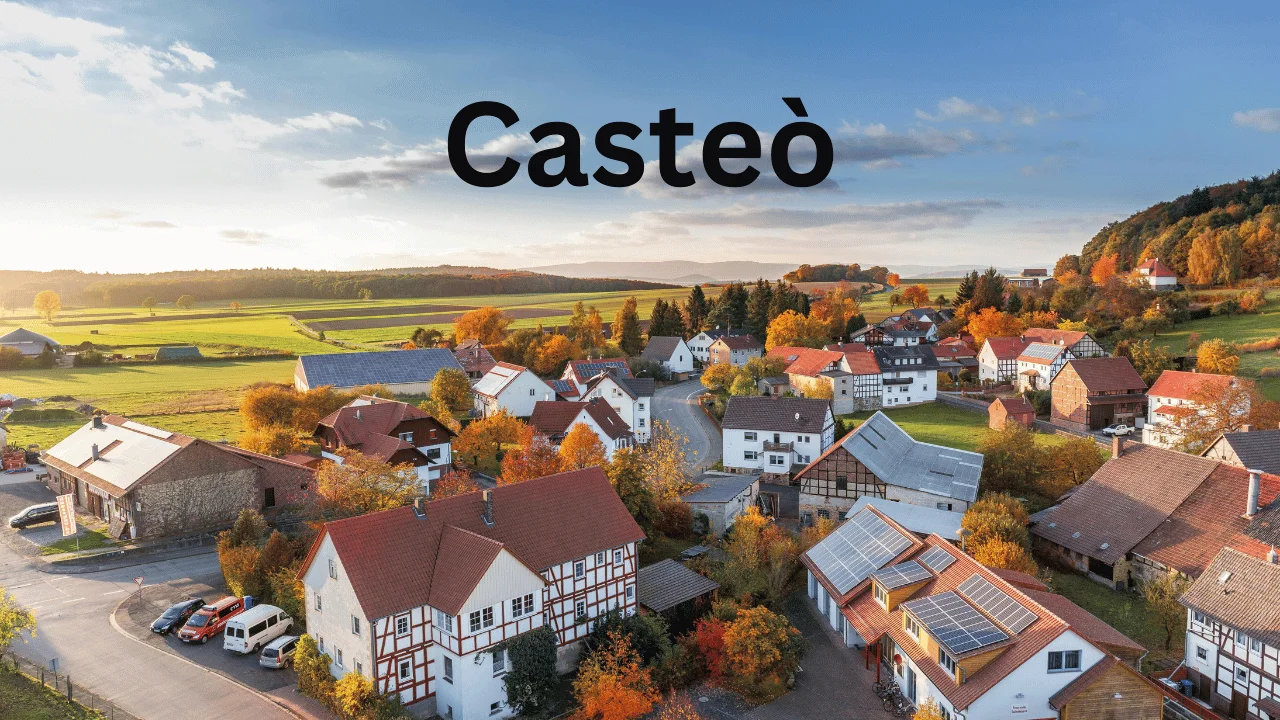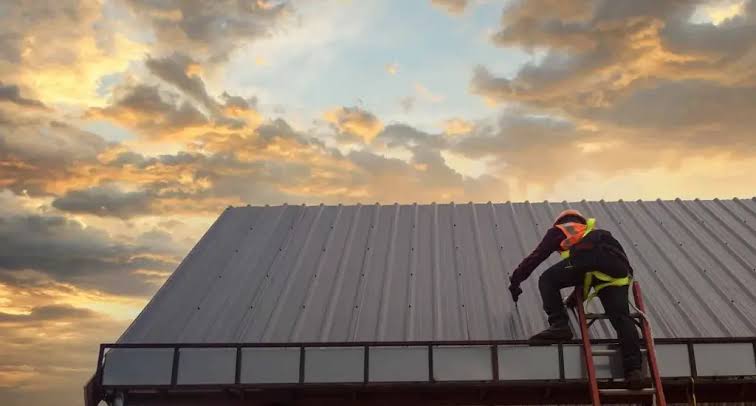Lifestyle
Unveiling the Intricacies of Casteò: A Comprehensive Guide

Understanding Casteò: An Overview
In the labyrinth of digital marketing, Casteò stands out as a pivotal concept that intricately intertwines with SEO strategies. Originating from the Italian word “caste,” this term embodies a unique approach to content optimization that transcends traditional boundaries.
Casteò, a concept entwined deeply within the fabric of various societies, stands at the crossroads of tradition and modernity. This guide ventures into the heart of Casteò, unlocking its potential and unraveling its complexities. From its historical roots stretching back to ancient civilizations to its pervasive influence in contemporary social, economic, and political spheres, Casteò’s multifaceted nature offers a rich tapestry of cultural significance and societal impact.
As we navigate through its past, present, and future, this article promises insights into how Casteò shapes identities, influences disparities, and fuels debates, while also exploring its global presence and evolving interpretations. Join us in uncovering the essence of Casteò, a journey that challenges perceptions, fosters understanding, and highlights the pathway to embracing its potential in shaping a more inclusive world
Decoding Casteò: What Sets It Apart?
The Essence of Casteò
Casteò epitomizes the art of crafting compelling narratives infused with linguistic finesse. It harnesses the power of storytelling to captivate audiences, fostering deep connections that resonate on a profound level.
The Pillars of Casteò
- Language Precision: Casteò thrives on the meticulous selection of words, leveraging nuanced language to convey complex ideas with clarity and elegance.
- Emotional Resonance: By tapping into the emotional core of human experience, Casteò transcends mere information dissemination, leaving a lasting impact on readers’ hearts and minds.
- Cultural Relevance: Casteò acknowledges the cultural tapestry within which it operates, weaving narratives that honor diversity and foster inclusivity.
Mastering Casteò: Strategies for Success
Crafting Compelling Narratives
At the heart of Casteò lies the art of storytelling. To master this craft, one must immerse oneself in the rich tapestry of human experience, drawing inspiration from diverse cultures, histories, and perspectives.
Leveraging Linguistic Finesse
Language is the cornerstone of Casteò, serving as both a tool and a canvas for creative expression. Through the judicious use of vocabulary, syntax, and rhetoric, one can transform mere words into captivating works of art.
Engaging Emotionally
Emotion lies at the crux of human connection, serving as a catalyst for empathy, understanding, and engagement. By infusing content with authentic emotion, one can forge profound connections with audiences, eliciting responses that transcend the digital realm.
The Impact of Casteò on SEO
Elevating User Experience
In the ever-evolving landscape of SEO, user experience reigns supreme. Casteò enhances user engagement by delivering content that resonates on a visceral level, thereby increasing dwell time, reducing bounce rates, and ultimately boosting search rankings.
Amplifying Brand Identity
Casteò serves as a potent tool for brand differentiation, enabling companies to carve out a unique niche in the digital marketplace. By infusing content with distinctive voice, style, and perspective, brands can cultivate a loyal following of engaged consumers.
Cultivating Organic Backlinks
Quality content naturally attracts attention, garnering organic backlinks from reputable sources across the web. Casteò amplifies this effect by creating content that is inherently link-worthy, thereby enhancing domain authority and boosting search visibility.
Historical Background and Evolution

The story of Casteò begins in the annals of history, where it emerged as a foundational element of social organization and cultural identity. Its origins, traced back to ancient civilizations, reveal how Casteò was intricately linked to the early human need for structure and classification within societies. These roots laid the groundwork for a system that, over centuries, would evolve, adapting to the changing landscapes of political power, economic development, and cultural exchange.
Origins and Early Development
Casteò’s inception is often associated with ancient practices of division based on occupation, ethnicity, and religious doctrine. In societies where Casteò took hold, it became a determinant of one’s profession, social status, and community roles. This system was not static; it transformed with invasions, migrations, and the spread of religions, which introduced new dimensions to the caste identity, blending indigenous traditions with external influences.
Evolution Through the Ages
The early 14th century marked a significant period of transformation for Casteò, as political upheavals and economic shifts began to challenge and reshape the established order. The role of Casteò evolved from a rigidly defined structure to a more fluid and complex network of social relations. This era saw the rise and fall of dynasties and empires, each leaving its imprint on the caste system, either by reinforcing it through legislation and social practices or by attempting to dismantle its hierarchies through reform movements.
Impact of Colonialism and Modernity
The arrival of colonial powers in regions where Casteò was practiced introduced new socio-political dynamics. Colonial administrations often utilized the existing caste divisions to implement a strategy of divide and rule, further entrenching and sometimes redefining caste identities for administrative convenience. However, this period also sparked movements of resistance and reform, as social reformers and independence leaders challenged caste-based discrimination and called for equality and social justice.
The post-colonial era and the advent of modernity brought about further changes to Casteò. Globalization, urbanization, and technological advancement started to blur traditional boundaries, facilitating mobility and exchange across caste lines. Education and economic opportunities acted as catalysts for change, enabling individuals to break free from predetermined paths and forge new identities.
Casteò in the Contemporary World
Today, Casteò exists in a state of flux, influenced by both its enduring legacy and the forces of modernization. While in some areas, caste still dictates social interactions and access to resources, in others, its relevance is fading, giving way to new forms of identity and community. The digital age, with its unprecedented access to information and platforms for collective action, offers new avenues for challenging caste-based discrimination and advocating for a more equitable society.
The historical journey of Casteò from its ancient origins to its current manifestations reveals a complex tapestry of human endeavor, struggle, and adaptation. Understanding this evolution is key to appreciating the depth and breadth of Casteò’s impact on societies and to envisioning a future where its potential is harnessed for the benefit of all.
Cultural and Societal Framework
Casteò’s intricate tapestry weaves through the very core of societal and cultural dynamics, influencing and shaping the lives of individuals and communities. This section delves into how Casteò has molded social structures, traditions, art, and culture, reflecting its pervasive role in shaping societal norms and interpersonal interactions.
Social Structures and Their Impact
At its core, Casteò has played a critical role in defining social hierarchies and roles within communities. It has established a framework where roles and responsibilities are often predetermined, influencing one’s occupation, marital prospects, and social interactions. This segmentation of society into distinct groups has fostered a sense of belonging and identity among members of the same caste while also creating barriers to social mobility and integration.
Despite the challenges posed by these divisions, communities have also leveraged Casteò to preserve unique cultural practices, languages, and knowledge systems. Each caste or subgroup has contributed to the societal mosaic through distinctive traditions, culinary practices, and artisanal skills, enriching the cultural heritage.
Art, Culture, and Tradition
Casteò has been a significant influence on the arts and culture, acting as both muse and medium. From classical dances and music that tell the stories of historical caste legends to the craftsmanship and artistry unique to certain castes, Casteò has been instrumental in fostering and preserving cultural expressions. These art forms not only serve as a repository of cultural memory but also as a means of resistance and commentary on social hierarchies and injustices.
Cultural festivals and rituals associated with Casteò offer a window into the complex interplay of religion, caste, and social life. These events, while reinforcing caste identities, also provide spaces for social cohesion, celebration, and the transmission of cultural values to future generations.
Role in Shaping Societal Norms and Interactions
Casteò’s influence extends to the everyday lives of individuals, shaping societal norms, behaviors, and interactions. The unwritten codes of conduct dictated by caste affiliation impact social dynamics, influencing everything from dining and marriage to professional networks and political alliances. These norms, deeply ingrained in the social consciousness, often dictate the boundaries of social acceptability and inclusion.
However, the modern context has seen a gradual shift, with increased questioning and challenging of these traditional norms. Education, urbanization, and global connectivity have played pivotal roles in transforming attitudes towards Casteò, fostering environments where merit, shared interests, and personal connections increasingly transcend caste boundaries.
Casteò and Modern Social Institutions
The interaction between Casteò and modern social institutions such as the legal system, educational establishments, and the workforce is complex and evolving. While affirmative action and anti-discrimination laws seek to mitigate the adverse effects of caste-based inequalities, the persistence of caste in social and professional settings underscores the challenges of eradicating deeply rooted societal structures.
Educational institutions, as spaces for socialization and learning, play a crucial role in either reinforcing or challenging caste stereotypes and prejudices. Similarly, the workforce reflects both the opportunities and obstacles presented by Casteò, with caste networks influencing employment prospects and workplace dynamics.
Casteò in Socio-Economic and Political Contexts
The imprint of Casteò on socio-economic and political landscapes is both profound and multifaceted, shaping access to resources, opportunities, and power. This section explores how Casteò intersects with economic disparities, political dynamics, and broader societal challenges, influencing the trajectory of individuals and communities.
Socio-Economic Disparities
Casteò plays a critical role in defining socio-economic statuses, often dictating access to education, employment, and wealth accumulation. Historical privileges and restrictions associated with specific castes have led to entrenched economic disparities. Higher caste groups have traditionally had better access to resources, education, and influential networks, translating into significant advantages in wealth and social status. Conversely, lower caste groups have faced systemic barriers that limit their access to these opportunities, perpetuating cycles of poverty and exclusion.
The economic dimension of Casteò is also evident in the occupational segregation it fosters, with certain castes associated with specific professions. While modern economies have seen some dilution of this association, remnants of these divisions persist, impacting economic mobility and the distribution of wealth.
Political Dynamics
Politically, Casteò has been both a tool of division and a platform for mobilization. Political parties and leaders have historically leveraged caste allegiances to garner support, often reinforcing caste identities and divisions in the process. However, caste has also served as a basis for political mobilization among marginalized groups, driving movements for social justice, representation, and reform.
The political engagement of caste groups has led to shifts in power dynamics, with reserved quotas and affirmative action policies aiming to rectify historical injustices. These measures, while contentious, reflect attempts to balance the scales and ensure broader participation in political and social institutions.
Employment and Education
The realms of employment and education reflect the dual impact of Casteò as both a barrier and a catalyst for change. Affirmative action policies in education and public sector employment have sought to level the playing field, providing lower caste groups with opportunities previously out of reach. These policies have led to significant improvements in access to education and jobs for marginalized communities, contributing to socio-economic mobility and a gradual reshaping of the caste-economic landscape.
However, the stigma associated with caste and affirmative action can also perpetuate stereotypes and resistance, highlighting the complex relationship between caste, meritocracy, and social justice. The private sector and informal employment markets continue to reflect caste-based biases and networks, underscoring the need for broader societal change.
Health Disparities
Health outcomes in societies where Casteò is prevalent often mirror the socio-economic disparities shaped by caste. Access to healthcare, nutritional food, and clean living conditions is significantly influenced by one’s caste status, contributing to disparities in health and longevity. Marginalized castes face systemic barriers to healthcare services, leading to higher rates of morbidity and mortality from preventable conditions.
Global Perspectives and Legal Context
The influence of Casteò extends beyond individual societies, touching upon global dynamics and legal frameworks that aim to understand and mitigate its impact on human rights and social justice. This section explores the international perspective on caste discrimination and the evolving legal and political responses aimed at addressing these issues.
Global Recognition of Caste Discrimination
Casteò, while deeply rooted in specific cultural contexts, has parallels in various forms of social stratification and discrimination globally. The international community, through organizations like the United Nations, has increasingly recognized caste discrimination as a significant issue affecting millions of people worldwide. This recognition has led to efforts to include caste-based discrimination within the broader discourse on human rights violations, alongside racism, sexism, and other forms of prejudice.
Global diaspora communities from regions where Casteò is practiced have also played a crucial role in raising awareness about caste issues. These communities, bridging their countries of origin and their new homes, have highlighted the transnational nature of caste discrimination, pushing for its acknowledgment and action in multiple countries.
Legal Frameworks and International Responses
The legal response to caste discrimination varies significantly across countries, reflecting the diverse ways in which caste is embedded within legal and social structures. In countries where Casteò is a recognized social issue, constitutions and legal codes have been amended to include provisions specifically aimed at preventing caste-based discrimination and violence. These legal measures often encompass affirmative action policies, anti-discrimination laws, and mechanisms for the protection of rights for those affected by caste prejudice.
Internationally, bodies like the United Nations have sought to incorporate caste discrimination into existing human rights frameworks. Efforts to include caste within the international legal lexicon involve advocating for the explicit recognition of caste discrimination in international human rights instruments and monitoring compliance with these standards.
Despite these efforts, implementing and enforcing laws against caste discrimination faces challenges. Legal frameworks can be hampered by social acceptance of caste practices, lack of awareness, and resistance from powerful groups that benefit from the status quo. Moreover, the intersectionality of caste with other forms of identity, such as gender and religion, complicates legal and social interventions.
The Role of Activism and Civil Society
Civil society organizations and activists play a pivotal role in combatting caste discrimination and advocating for legal reforms. Grassroots movements, international advocacy groups, and non-governmental organizations work tirelessly to bring attention to caste-related abuses, support victims, and lobby for stronger legal protections.
These groups utilize a variety of strategies, from legal challenges and public demonstrations to international lobbying and awareness campaigns, to effect change. Their efforts are crucial in not only pushing for legal reforms but also in changing societal attitudes towards caste discrimination.
Challenges and Future Directions
While significant strides have been made in recognizing and addressing caste discrimination through legal and political means, numerous challenges remain. Ensuring the effective implementation of laws, changing deeply entrenched social attitudes, and addressing the complexities of caste intersectionality require sustained effort and international cooperation.
The future direction in combating caste discrimination globally involves strengthening international legal frameworks, supporting civil society activism, and fostering global awareness and solidarity. Efforts must also focus on education and dialogue to challenge the normalization of caste-based prejudices and promote a more inclusive understanding of human rights.
Modern Dynamics and Controversies
The landscape of Casteò is continually evolving, influenced by modern challenges and controversies that both reflect its enduring legacy and highlight the need for change. This section delves into the contemporary dynamics of Casteò, examining how activism, technology, and changing societal attitudes are shaping its future.
Technology, Social Media, and Activism
The advent of technology and social media has significantly altered the discourse around Casteò, providing unprecedented platforms for activism and advocacy. Social media networks allow individuals and groups to share experiences of caste discrimination, mobilize support, and advocate for social justice on a global scale. These platforms have democratized the fight against caste discrimination, enabling grassroots movements to gain visibility and influence previously unimaginable.
However, technology’s role is dual-edged. While it can amplify voices against caste-based discrimination, it can also perpetuate caste prejudices and segregation online. Social media platforms can become arenas for caste-based harassment and hate speech, reflecting offline prejudices in digital spaces. The challenge lies in leveraging technology to promote inclusivity and combat discrimination while safeguarding against its misuse.
Changing Attitudes Towards Casteò
Societal attitudes towards Casteò are in a state of flux, with generational shifts and increased exposure to global perspectives fostering a reevaluation of caste identity and its relevance. Younger generations, particularly those in urban areas or with access to higher education, are increasingly questioning the traditional norms and hierarchies dictated by caste. This questioning is leading to a gradual, albeit uneven, transformation in how caste is perceived and experienced within society.
The role of education is paramount in this shift, offering a space for critical engagement with issues of caste discrimination and social justice. Educational initiatives aimed at promoting cultural sensitivity and anti-discrimination can play a crucial role in changing societal attitudes, challenging stereotypes, and fostering a more inclusive environment.
Controversies Surrounding Caste
As attitudes towards Casteò shift, controversies have emerged, particularly around affirmative action policies and caste-based quotas in education and employment. These policies, aimed at rectifying historical injustices and promoting social mobility, have sparked debates on meritocracy, social equity, and the perpetuation of caste identities.
Critics argue that affirmative action entrenches caste distinctions rather than eradicating them, potentially stigmatizing beneficiaries and leading to reverse discrimination. Supporters, however, contend that such measures are essential for addressing entrenched inequalities and ensuring that marginalized communities have access to opportunities. This debate reflects broader tensions around how best to achieve a caste-less society while addressing the systemic inequalities rooted in caste.
The Role of the Legal System
The legal system plays a critical role in addressing contemporary challenges related to Casteò. Through landmark judgments and legal reforms, courts have sought to tackle discrimination, uphold affirmative action policies, and redefine the boundaries of caste identity in modern society. Legal battles over caste discrimination, reservation policies, and the rights of marginalized groups continue to shape the discourse on Casteò, highlighting the legal system’s role in both reflecting and driving societal change.
Future Directions
Navigating the complexities of Casteò in the modern world requires a multi-faceted approach that addresses both its deep-seated roots in tradition and its evolving manifestations in contemporary society. Efforts must focus on leveraging technology for positive change, fostering generational shifts in attitudes, critically evaluating the impact of affirmative action, and ensuring that legal frameworks support the movement towards equality and justice.
The path forward involves a collective effort to understand the nuances of Casteò, engage in open and inclusive dialogues, and implement policies that reflect a commitment to social justice and human rights. As society grapples with these modern dynamics and controversies, the ultimate goal remains the creation of a world where the legacy of Casteò can be transformed into one of unity and diversity, free from discrimination and inequality.
Cultural Significance and Preservation

Casteò, with its deep roots in history and its pervasive influence across various aspects of society, holds a profound cultural significance. This section explores the richness of cultural heritage shaped by Casteò, the efforts towards its preservation, and the importance of embracing future changes while honoring the past.
Preserving Heritage, Embracing the Future
The preservation of cultural heritage associated with Casteò involves a delicate balance between maintaining traditional practices and adapting to modern sensibilities. Efforts to preserve caste-specific arts, crafts, music, and culinary traditions are essential in keeping the cultural richness alive for future generations. Initiatives ranging from documentation and archiving to the promotion of traditional crafts in global markets have played a crucial role in these preservation efforts.
However, preservation does not mean resistance to change. As societies evolve, so too do cultural practices. The challenge lies in embracing innovation and change while respecting the historical and cultural significance of traditional practices. This approach allows for a dynamic cultural heritage that is both rooted in history and responsive to contemporary realities.
Cultural Richness and Architectural Marvels
Casteò has contributed to an unparalleled diversity of cultural expressions and architectural marvels. From the intricate temple carvings and historic fortresses to traditional dwellings and urban designs, caste-based communities have left an indelible mark on the architectural landscape. These structures not only serve as a testament to the artistic and engineering prowess of their creators but also as symbols of cultural identity and social organization.
The preservation of these architectural sites is crucial, not only for their historical value but also for their role in educating and inspiring future generations. Efforts by governments, NGOs, and international bodies to restore and protect these sites underscore their significance in the cultural tapestry of societies influenced by Casteò.
Navigating Modernity and Tradition
The interaction between modernity and tradition in the context of Casteò presents both challenges and opportunities. On one hand, globalization and technological advancement pose threats to traditional practices and ways of life. On the other hand, they offer new platforms for the expression and dissemination of cultural heritage.
Education plays a pivotal role in this navigation, fostering an appreciation for traditional knowledge and practices while equipping individuals with the skills needed to thrive in a modern, interconnected world. Cultural festivals, museums, and educational programs can serve as bridges between the past and the present, ensuring that the essence of Casteò’s cultural heritage is not lost but rather reinterpreted and reinvigorated.
The Renaissance of Gastronomy
Cuisine associated with Casteò reflects the diversity and richness of cultural heritage, with each caste group boasting its unique culinary traditions. The renaissance of gastronomy, fueled by a global interest in traditional and regional cuisines, has brought these dishes to the forefront of the culinary world. This movement not only celebrates the flavors and techniques developed over centuries but also highlights the importance of preserving and promoting culinary heritage as an integral part of cultural identity.
Restaurants, food festivals, and culinary tours dedicated to showcasing caste-specific cuisines play a vital role in this renaissance. They not only provide a sensory experience for locals and tourists alike but also contribute to the economic empowerment of communities by promoting local produce and culinary skills.
Future Outlook and Navigating Changes
As we delve into the future outlook of Casteò, it is imperative to consider the evolving dynamics and the multifaceted approaches required to navigate these changes. This section examines the potential future scenarios for Casteò, emphasizing the importance of adaptability, inclusivity, and innovation in shaping a society where the legacy of Casteò can be transformed into a force for unity and progress.
Evolving Perspectives on Casteò
The perspectives on Casteò are continually evolving, influenced by global trends, technological advancements, and shifting societal values. There is a growing awareness of the need to move beyond traditional caste-based identities and divisions, towards a more inclusive understanding of community and belonging. This evolution is particularly evident among younger generations, who often view caste with a lens that is both critical of its discriminatory aspects and curious about its cultural significance.
The future of Casteò lies in harnessing this evolving perspective to foster a society that values diversity and equality. Educational initiatives, media representation, and public discourse play crucial roles in shaping these perspectives, offering avenues to challenge prejudices and build a more inclusive narrative around caste.
The Role of Technology and Innovation
Technology and innovation hold the key to navigating the changes surrounding Casteò. Digital platforms offer unprecedented opportunities for education, dialogue, and activism, enabling individuals to connect, share experiences, and mobilize for social change. These tools can help dismantle barriers, challenge stereotypes, and promote a deeper understanding of Casteò’s complexities.
Furthermore, technological advancements can aid in preserving and celebrating the cultural heritage associated with Casteò. From virtual reality experiences that bring historical sites and traditions to life, to online marketplaces that promote traditional crafts, technology can bridge the gap between tradition and modernity, ensuring that cultural practices continue to thrive in a globalized world.
Strategies for Social Integration and Mobility
Achieving social integration and mobility in the context of Casteò requires targeted strategies that address the root causes of inequality and discrimination. Affirmative action and equal opportunity policies remain crucial in leveling the playing field, but their implementation needs to be continuously evaluated and adapted to ensure effectiveness and fairness.
Collaboration between governments, civil society, and communities is essential in developing and implementing strategies that promote social integration. These efforts should focus not only on economic empowerment but also on creating spaces for intercultural dialogue and exchange, fostering mutual understanding and respect among diverse social groups.
Anticipating and Addressing Challenges
As society progresses, new challenges will emerge in the discourse around Casteò. Issues of identity, migration, and globalization will intersect with traditional caste dynamics, presenting complex scenarios that require nuanced responses. Anticipating these challenges involves proactive research, policy-making, and community engagement, ensuring that responses are informed, inclusive, and adaptable to changing circumstances.
Envisioning a Future Beyond Casteò
The ultimate goal in navigating the future of Casteò is to envision a society where caste no longer dictates one’s opportunities, relationships, and identity. This does not mean erasing cultural heritage but rather transcending the limitations and divisions imposed by traditional caste systems. Achieving this vision requires collective efforts towards education, empowerment, and empathy, building a foundation for a society that celebrates diversity as a source of strength and innovation.
Practical Guide to Casteò Today
Navigating the contemporary landscape of Casteò requires an understanding of both its historical roots and its modern manifestations. This section serves as a practical guide, offering insights into how individuals and visitors can engage with the culture, society, and heritage of Casteò in today’s world, fostering appreciation and inclusivity.
Exploring Casteò Culture and Society
Casteò’s culture and society are rich tapestries woven from centuries of history, tradition, and modern influences. To truly engage with this complexity, individuals should immerse themselves in the cultural practices, social norms, and everyday life of communities influenced by Casteò. This can be achieved through:
- Participating in Cultural Festivals: These events offer a vibrant showcase of the traditions, art, music, and cuisine associated with Casteò, providing a firsthand experience of its cultural diversity.
- Visiting Historical Sites and Architectural Marvels: Exploring the physical landmarks that have been shaped by Casteò over centuries offers insights into the historical and cultural significance of this social system.
- Engaging with Local Communities: Interaction with local communities allows for a deeper understanding of the contemporary relevance of Casteò and its impact on daily life.
Tourism and Responsible Travel
Tourism plays a significant role in promoting cultural exchange and understanding. When visiting areas where Casteò is a significant aspect of society, travelers should adopt a responsible and respectful approach:
- Educate Yourself: Understanding the historical and cultural context of Casteò before visiting can enhance the travel experience and foster respect for local traditions and social norms.
- Support Local Economies: Purchasing local crafts, dining at local eateries, and staying in locally owned accommodations can contribute to economic empowerment and the preservation of cultural heritage.
- Respectful Engagement: Approach discussions on Casteò with sensitivity and openness, recognizing the complex emotions and historical injustices associated with it.
Famous Sites and Residents
Casteò has influenced the emergence of renowned sites and notable individuals who have made significant contributions to art, literature, politics, and social reform. Exploring the works of famous residents, visiting their homes, or attending exhibitions can provide a unique perspective on the influence of Casteò on creativity and social change.
Getting Around
Understanding the social dynamics influenced by Casteò can also inform how one navigates the geographical and social landscapes. Public transportation, walking tours, and guided visits can offer diverse experiences of spaces shaped by Casteò, from bustling markets to serene temples, each telling a part of the story.
Conclusion: Embracing the Power of Casteò
In conclusion, Casteò represents a paradigm shift in the realm of digital marketing, offering a holistic approach to content optimization that transcends traditional boundaries. By mastering the art of storytelling, leveraging linguistic finesse, and engaging emotionally, businesses can elevate their SEO efforts to new heights, forging meaningful connections with audiences and redefining the digital landscape.
In exploring the multifaceted world of Casteò, we’ve journeyed through its historical roots, cultural depth, societal impacts, and contemporary challenges, arriving at a nuanced understanding of its enduring legacy and evolving presence in modern society. Casteò, with its rich traditions, complex social dynamics, and significant global implications, remains a powerful force shaping identities, communities, and nations.
As we reflect on the insights gained, it becomes clear that unlocking the potential of Casteò requires a concerted effort to appreciate its cultural significance, confront its divisive aspects, and embrace the possibilities of a future where diversity and inclusivity pave the way for unity and progress. This guide, by delving into the essence of Casteò, invites readers to engage with its complexities, learn from its history, and contribute to a dialogue that envisions a more equitable and enriched world for all.
FAQs about “Casteò: A Guide to Unlocking Its Potential”
1. What is Casteò, and why is it significant?
Casteò refers to the complex system of social stratification and cultural practices deeply embedded in certain societies. It is significant because it shapes identities, influences socio-economic disparities, and affects cultural traditions. Understanding Casteò is crucial for addressing social justice issues and appreciating the rich cultural heritage it encompasses.
2. How has the perspective on Casteò changed over time?
Over time, perspectives on Casteò have evolved due to global influences, technological advancements, and shifting societal values. There’s a growing awareness and critique of its discriminatory aspects, alongside an appreciation for the cultural diversity and heritage it represents. Younger generations, in particular, are reevaluating Casteò’s relevance in contemporary society.
3. What role does technology play in the context of Casteò?
Technology, especially social media, plays a dual role in the context of Casteò. It offers platforms for advocacy, education, and social change, allowing for greater visibility and mobilization against caste discrimination. However, it can also perpetuate caste prejudices and segregation online. Balancing these aspects is key to leveraging technology for positive change.
4. How can individuals engage with and appreciate Casteò culture today?
Individuals can engage with and appreciate Casteò culture by participating in cultural festivals, visiting historical sites, and interacting with local communities. Responsible tourism and educational efforts also contribute to a deeper understanding and appreciation of the rich traditions and contemporary challenges associated with Casteò.
5. What are the future outlooks for Casteò, and how can society navigate its challenges?
The future outlook for Casteò involves envisioning a society where caste no longer dictates opportunities or identities, while still celebrating cultural diversity. Navigating its challenges requires education, dialogue, and policies that promote equality and social integration. Collective efforts towards understanding, empathy, and social justice are essential for transforming Casteò’s legacy into a force for unity and progress.
Lifestyle
Quartist: Revolutionizing the Art World Through Technology and Innovation

In an era where creativity intersects with cutting-edge technology, Quartist emerges as a dynamic force reshaping the global art landscape. Whether you’re an artist, collector, investor, or tech enthusiast, Quartist offers a new frontier in the way we create, share, and appreciate art. But what exactly is Quartist, and why is it capturing the attention of the creative and digital communities alike?
What Is Quartist?
Quartist is a modern digital platform that blends art, blockchain technology, and community-driven innovation. At its core, Quartist aims to empower artists by providing tools to tokenize their work, ensure authenticity, and create direct channels with their audience. It also serves as a vibrant marketplace and social network for art lovers, investors, and creators.
Key Features of Quartist
1. Digital Art Tokenization
Quartist allows artists to mint their artwork as NFTs (Non-Fungible Tokens), ensuring each piece is unique, verifiable, and protected on the blockchain. This enables artists to retain ownership and receive royalties for secondary sales—something the traditional art world often lacks.
2. Decentralized Marketplace
Unlike traditional galleries that act as intermediaries, Quartist provides a peer-to-peer art marketplace, allowing artists to sell their works directly to collectors. This model ensures transparency, reduces costs, and promotes equitable earnings for creators.
3. Community Engagement
At the heart of Quartist lies its strong social component. Artists and collectors can connect, collaborate, and share experiences in an open, inclusive environment. The platform also supports forums, exhibitions, and voting features that encourage community participation and collective curation.
4. Smart Contract Royalties
Every transaction involving an artwork on Quartist is governed by smart contracts, ensuring that artists automatically receive royalties for future resales of their work—solving a long-standing issue in traditional art sales.
5. Cross-Medium Accessibility
Quartist isn’t limited to digital paintings. It supports a variety of media including music, videos, animations, 3D models, and even augmented reality art. This makes it an all-encompassing platform for diverse artistic expressions.
How Quartist Is Transforming the Art World
- Democratization of Art: Quartist enables emerging artists from across the globe to gain visibility without needing connections to elite galleries or auction houses.
- Transparency & Trust: With blockchain technology, every transaction and ownership record is transparent and immutable.
- Global Reach: Artists can instantly reach a worldwide audience and collectors can invest in art with confidence from anywhere.
- Monetization Tools: Beyond selling art, creators can build subscription models, launch digital events, or offer exclusive content to supporters.
Use Cases of Quartist
- Aspiring Digital Artists: Launch and sell their first pieces to a global audience without gallery representation.
- Collectors and Investors: Buy original digital works with verified ownership, supporting creators and potentially gaining long-term value.
- Brands and Creators: Collaborate with artists for NFT drops, product designs, or digital campaigns.
Challenges Quartist May Face
Despite its potential, Quartist must navigate key challenges:
- Market Volatility: The NFT and crypto space is highly speculative.
- Legal Uncertainty: Intellectual property rights and digital ownership laws continue to evolve.
- User Education: New users may need guidance on using blockchain and NFTs safely.
The Future of Quartist
As digital ownership becomes mainstream and Web3 technologies continue to grow, platforms like Quartist are well-positioned to lead the next generation of artistic innovation. With plans to integrate AI-driven curation, VR galleries, and physical-digital hybrid experiences, Quartist is not just an art platform—it’s a cultural movement.
Final Thoughts
Quartist represents more than just a digital art marketplace—it’s a revolution in artistic empowerment, economic opportunity, and global collaboration. For anyone looking to explore the evolving intersection of creativity and technology, Quartist is undoubtedly a name to watch.
Lifestyle
Understanding Family Law: How mylawyer360.com family Can Help

Family law encompasses a wide range of legal matters that affect families, from divorce and child custody to adoption and estate planning. Navigating these issues can be emotionally challenging and legally complex. At mylawyer360.com family, we connect individuals with experienced family law attorneys who can provide expert guidance and representation.
Common Family Law Issues
1. Divorce & Separation
Divorce involves the legal dissolution of a marriage, addressing key issues such as:
- Asset division (community property vs. separate property)
- Spousal support (alimony)
- Child custody & visitation rights
Our network of attorneys helps clients negotiate fair settlements or represent them in court if necessary.
2. Child Custody & Support
Determining custody arrangements is often one of the most contentious aspects of family law. Factors considered include:
- The child’s best interests
- Each parent’s ability to provide care
- The child’s relationship with each parent
Child support calculations are based on state guidelines, income levels, and the child’s needs.
3. Adoption & Guardianship
Adoption laws vary by state, and the process can be lengthy. Our lawyers assist with:
- Stepparent adoptions
- International adoptions
- Foster care adoptions
- Guardianship arrangements for minors or incapacitated adults
4. Prenuptial & Postnuptial Agreements
These contracts outline how assets and debts will be divided in case of divorce or death. A well-drafted agreement can prevent future disputes.
5. Domestic Violence & Protective Orders
If you or a loved one is facing abuse, a family law attorney can help file for a restraining order and ensure legal protection.
6. Estate Planning & Family Law
While not strictly family law, estate planning intersects with it by addressing:
- Wills & trusts
- Power of attorney
- Guardianship designations for children
Why Choose mylawyer360.com family
- Experienced Attorneys: We connect you with skilled lawyers specializing in family law.
- Personalized Legal Strategies: Every case is unique, and our attorneys tailor their approach accordingly.
- Affordable Options: We help you find legal representation that fits your budget.
Final Thoughts
Family legal issues can be overwhelming, but you don’t have to face them alone. mylawyer360.com family provides access to trusted family law attorneys who can guide you through the process with compassion and expertise.
Lifestyle
The Benefits of Investing in Professional Roof and Fencing Installation Services

Table of Contents
- Understanding the Value of Professional Installation
- Why Quality Materials Matter
- Safety First: Reducing Risks and Hazards
- Enhancing Property Value
- Long-term Savings Through Professional Services
- Time Efficiency and Project Completion
- Insuring Your Property Rightly
- Making an Informed Decision
- Staying Updated with Trends in Roofing and Fencing
Understanding the Value of Professional Installation
Regarding one of the most significant investments in your home, ensuring every component is installed precisely is crucial. This is especially true for features like roofing and fences, which are fundamental to a property’s safety, security, and aesthetic appeal. Professional installation services offer expertise and attention to detail that is difficult to achieve through DIY methods. The advantage begins with craftsmanship that meets and often exceeds industry standards, providing a reliable defense against the elements. This dedication to quality is not limited to execution but extends throughout the planning phase, where seasoned professionals collaborate with clients to realize their vision. When structures vital to the shelter and security of your home—including roofing and fencing are professionally installed, homeowners feel secure and satisfied, knowing their homes are well-protected and beautifully built.
Why Quality Materials Matter
Professional roof and fence installers generally possess access to high-quality materials inaccessible to the general public. These materials are selected not only for their aesthetic qualities but also for their resilience and capacity to endure local climatic conditions. For instance, roofs made from high-quality shingles or metal panels provide better fire resistance and longer lifespans than inferior products. Similarly, fencingconstructed from treated wood or wrought iron offers strong security and requires less maintenance. When homeowners choose to work with professionals for roofing and fencing, they can be assured that the materials will be of exceptional quality. This leads to great structures that add significant value to their property. This value manifests in decreased maintenance costs, enhanced longevity, and improved performance of the installed structures.
Safety First: Reducing Risks and Hazards
Constructing and installing roofs and fences carries inherent risks, such as working at elevated heights and operating power tools. Professional installers mitigate these risks through rigorous safety protocols and training. Adhering to strict industry standards and regulations, professionals prioritize safety on the job site, not just for their workers but also for homeowners and their families. This commitment extends beyond the initial installation phase, as professional work ensures that installed structures meet all safety codes, reducing the likelihood of future incidents like fence collapses or roof leaks. This focus on safety protects the physical well-being of those involved and provides clients with peace of mind, knowing that their installations will function safely and effectively for years to come.
Enhancing Property Value
Homeownership often represents one of the most significant financial investments individuals will make, and increasing its value can yield substantial returns. Expertly installed roofs and fences can dramatically enhance property curb appeal, making a home more attractive to prospective buyers. This visual appeal is compounded by the functional assurance these installations provide. Potential buyers are more inclined to choose homes that won’t require immediate repairs or replacements of essential structures. Moreover, expertly installed features reflect a well-cared-for property, suggesting that other house elements have been similarly maintained. Homeowners may experience an increased asking price when they choose to sell, and in competitive markets, this benefit can be considerable due to the combination of these factors.
Long-term Savings Through Professional Services
While it might be tempting to take the DIY route for cost reasons, the upfront savings are often eclipsed by the long-term benefits of professional installation. Expert installers possess the knowledge to foresee potential problems that an inexperienced individual might miss, addressing them before they become significant issues. For instance, a seemingly minor leak in a roof can result in severe water damage over time if not correctly fixed. Professionals offer immediate solutions and preventive measures that safeguard against future problems, maximizing the installation’s lifespan. This foresight, coupled with warranties and maintenance advice from professional services, contributes to long-term savings, making the initial investment worthwhile.
Time Efficiency and Project Completion
Home improvement projects can be daunting regarding time commitment, especially for those attempting to balance them with everyday responsibilities. Engaging professional services ensures projects are completed swiftly and correctly, without the disruptions caused by trial-and-error approaches common in DIY projects. Professionals bring an organized and systematic approach to installations, equipped with specialized tools and a team of trained workers. This efficiency reduces downtime for homeowners, who can enjoy the benefits of their new roof or fence sooner. Time saved relieves homeowners from potential stress and reduces the overall cost implications associated with prolonged project timelines.
Insuring Your Property Rightly
Another aspect of investing in professional installation services is the potential impact on homeowners’ insurance. Insurance companies often offer favorable premiums for homes with professionally installed roofs and fences because of the lower risk of damage. Structures that meet strict codes and industry standards are typically viewed as more reliable, which can translate into reduced insurance costs over time. Additionally, many insurers require documentation or verification of professional installations to extend specific coverage benefits. This relationship underscores the importance of ensuring all installations are carried out by qualified professionals, ensuring physical safety, financial savings, and adequate risk coverage.
Making an Informed Decision
Selecting an appropriate contractor can significantly influence your installation’s quality and durability. Researching thoroughly and seeking certified professionals with a reliable work history is vital. The selection process often involves gathering recommendations from trusted sources, checking online reviews, and verifying credentials and experience. Effective communication is essential; trustworthy contractors will clarify expenses, schedules, and possible obstacles. By following these guidelines, homeowners can make well-informed choices that lead to successful project results.
Staying Updated with Trends in Roofing and Fencing
The home improvement sector constantly evolves, with new technologies and trends emerging regularly to improve efficiency, aesthetics, and sustainability. Staying informed about these developments allows homeowners to incorporate modern solutions that enhance the performance and look of their space. Sustainable materials, energy-efficient installations, and technologically advanced designs are increasingly popular, aligning with a growing awareness of environmental impact and reduced operational costs.
-

 Tech1 year ago
Tech1 year agoUnderstanding ПРЕВОДЕЧ: Unlocking Global Communication
-

 Tech1 year ago
Tech1 year agoGeekzilla.tech Honor Magic 5 Pro: Unveiling the Technological Marvel
-

 Blog1 year ago
Blog1 year agoGeekzilla Autos: Everything You Need To Know
-

 Blog1 year ago
Blog1 year agoGeekzilla Podcast: A Journey into Geek Culture
-

 Health1 year ago
Health1 year agoWellhealth how to build muscle Tag: Complete Guide
-

 Health1 year ago
Health1 year agoWellHealthOrganic Buffalo Milk Tag: Your Nutrient-Rich Dairy Upgrade
-

 Blog1 year ago
Blog1 year agoTips for Breaking Into the Restaurant Industry
-

 Tech1 year ago
Tech1 year agoPikruos is a Leading Provider of Innovative IT Solutions
